
Roots
The very strands that crown our heads, particularly those with a coil, a curl, or a wave, carry a profound resonance, holding within their structure the whispers of generations past. To consider how textured hair historically articulated social standing is to embark on a voyage into the deepest currents of human connection, cultural expression, and the often-unseen architecture of power. This exploration calls us to look beyond simple aesthetics, to peer into the communal hearths and royal courts where every twist and adornment spoke a language understood by all. It is a dialogue with the ancestral, a recognition that the physical attributes we bear are not merely biological happenstance, but living archives of human ingenuity and resilience.
Our journey into the heritage of textured hair begins at its elemental core. The unique helical formation of textured hair, springing from a distinctive follicular shape, has always been more than a biological fact; it is a canvas upon which societies inscribed meaning, status, and identity. From the ancient kingdoms of the Nile to the vibrant communities across West Africa, hair was not a mere covering. It served as a dynamic billboard, signaling affiliations, achievements, and aspirations.

Hair’s Ancestral Architecture
To truly appreciate the deep historical connection between textured hair and social standing, one must first grasp its intrinsic anatomy and physiology. Unlike linear hair types, the follicle producing textured hair tends to be elliptical or flattened, causing the hair shaft to grow in a spiral or zig-zag pattern. This distinctive morphology imparts characteristics such as spring, volume, and inherent strength, alongside a tendency for dryness due to the coiled path of natural oils along the shaft. These qualities, often misunderstood or devalued in later historical periods, were once celebrated.
Across ancient African civilizations, the inherent qualities of textured hair were seen not as limitations, but as blessings. Its natural volume and elasticity lent themselves to gravity-defying sculptures, intricate braiding, and the secure attachment of precious adornments. Such manipulations were not simply decorative; they were highly ritualized practices, reflecting a sophisticated understanding of hair’s capacity to convey complex social messages.

Decoding Ancient Coiffures
The classifications of textured hair in antiquity were less about curl pattern typology and more about symbolic representation. Hairstyle functioned as a visual language, a codex legible to all within a community. It communicated age, marital status, ethnic identification, wealth, and even religious devotion.
For instance, archaeological discoveries from ancient Egypt reveal sophisticated wig-making techniques and elaborate braided styles, worn by both men and women of the elite, often adorned with gold and beads to signify their wealth and spiritual connection (Afriklens, 2024). The more ornate and decorated the hair, the higher one’s social standing.
Across ancient African cultures, textured hair served as a vibrant canvas, each style and adornment broadcasting intricate details of an individual’s place within society.
Consider the Mangbetu People of the Democratic Republic of Congo, whose profound appreciation for beauty and intellect historically found expression in cranial elongation, a practice known as Lipombo. This reshaping of the skull during infancy was seen as a mark of prestige and heightened intellectual capacity (Creed & Cloth, 2024; The Sculpted Skull, 2025). Hair was then styled meticulously, often in a fan-like or elongated coiffure, to accentuate this unique head shape, further solidifying the wearer’s social status, especially among ruling classes (Pass, 2022). These elaborate coiffures, requiring significant time and skill to create, were reserved for public occasions and conveyed immense cultural value.
The very act of styling was often communal, fostering bonds and transmitting cultural knowledge. In pre-colonial African societies, the act of braiding hair could signify a young girl’s passage into adulthood, with intricate styles marking her new social standing (Khumbula, 2024). These practices were not isolated incidents but were woven into the very fabric of daily life and ceremonial events, reinforcing social order and celebrating individual identity within the collective.
| Traditional Style or Practice Mangbetu Lipombo and Elongated Coiffures |
| Associated Social Status or Meaning Prestige, intellect, nobility, wealth, ruling class membership. |
| Traditional Style or Practice Ancient Egyptian Wigs/Braids |
| Associated Social Status or Meaning Wealth, social standing, religious devotion, royalty. |
| Traditional Style or Practice Akan Dansinkran Hairstyle (Ghana) |
| Associated Social Status or Meaning Queen mothers, opinion leaders, royals, priestesses, enhances thinking capacity. |
| Traditional Style or Practice West African Braids/Twists/Locs |
| Associated Social Status or Meaning Tribe, social position, family history, marital status, age, wealth, rank. |
| Traditional Style or Practice These historical markers underscore the profound role of textured hair in articulating social structures and personal identity across African civilizations. |

Ritual
The styling of textured hair, far from being a simple cosmetic exercise, has always been a profound ritual, steeped in both art and social science. It serves as a living testimony to the ingenious techniques and specialized tools that have transformed elemental biology into statements of power, protection, and belonging. How has this rich tradition, flowing from our shared heritage, shaped and been shaped by notions of social standing through the ages? This query leads us through a landscape of ancient practices, communal gatherings, and symbolic transformations.
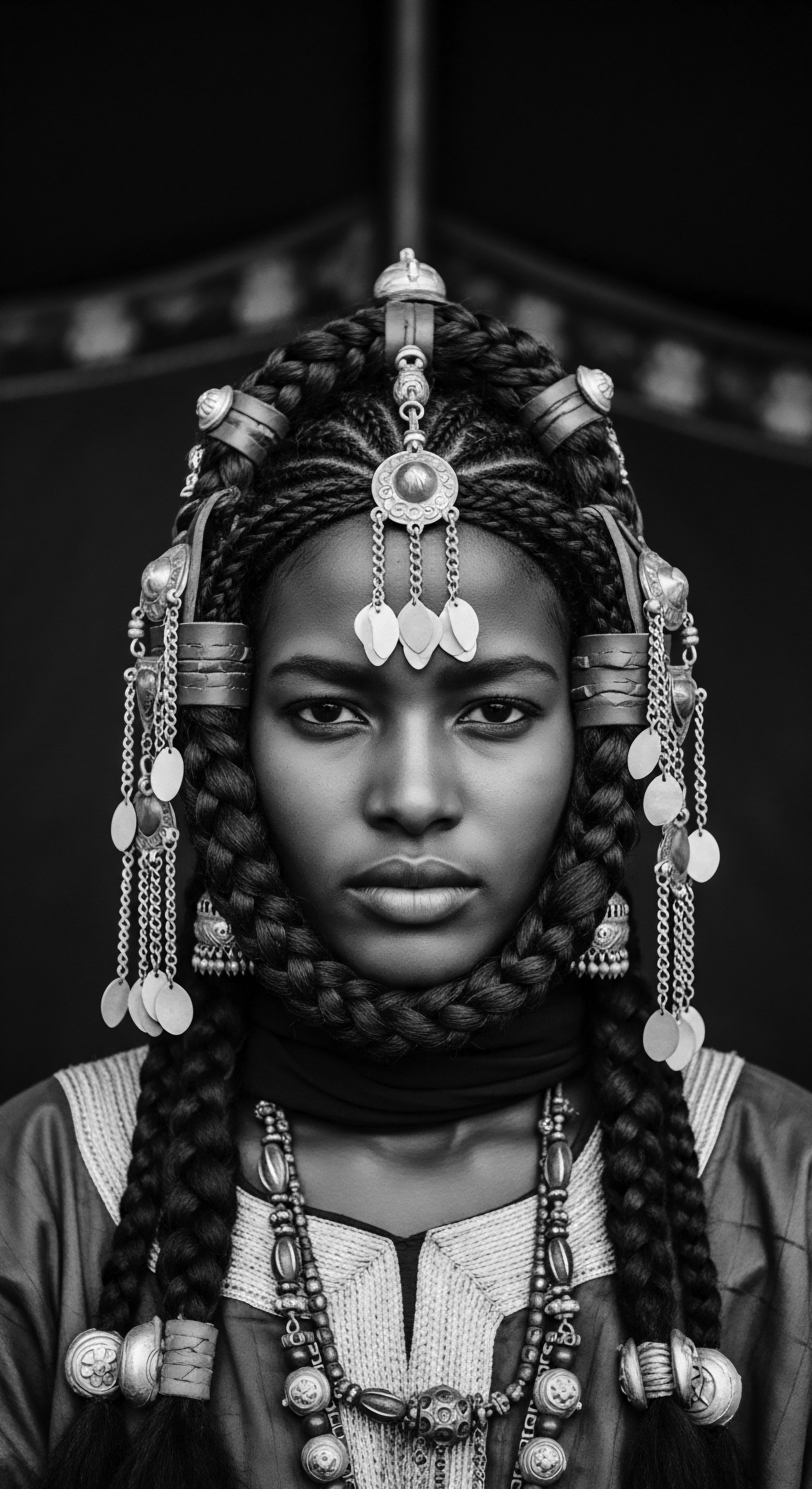
What Were the Ancestral Roots of Protective Styles?
The practices we recognize today as protective styling have a lineage stretching back millennia, originating in the practical necessity of maintaining hair health in diverse climates, alongside their profound social implications. Braiding, twisting, and coiling textured hair into intricate patterns or securing it close to the scalp minimized tangling, breakage, and exposure to environmental elements. These methods allowed for sustained growth, which in many African societies, correlated directly with wisdom, prosperity, and longevity. The Cornrow, for instance, a style found across numerous West African cultures, dates back as far as 3000 BCE and served not just as a practical means of hair care, but also as a powerful medium for communication (BLAM UK CIC, 2022).
The patterns of these styles were often distinctive to particular tribes or communities, acting as clear identifiers of ethnic origin, marital status, or social position (Afriklens, 2024). A glance at someone’s coiffure could convey whether they were royalty, a priestess, a warrior, or a person in mourning. The care required to produce such elaborate, enduring styles was itself a demonstration of leisure and means, available to those not burdened by constant manual labor, further solidifying the connection between complex hairstyles and elevated status.

How Did Hairstyles Communicate Community Roles?
Beyond simple identification, hairstyles were active participants in social discourse. In certain West African societies, hair communicated a person’s age group, their rank within the community, or even their religious role (Tharps & Byrd, 2001, as cited in Dansinkran Hairstyle Fashion, 2019). The Amasunzu Style of the Hutu and Tutsi populations in Rwanda, with its crests and peaks, conveyed a readiness for battle, or even a somber preparation for death, symbolizing courage and martial prowess (Oxford Academic, 2024). Such styles were not merely adornments but a form of public declaration, a visual resume of one’s societal function and standing.
The elaborate headwear and coiffures of the Yoruba people of Nigeria, often depicting symbolic figures or abstract designs, articulated community roles and spiritual beliefs (Princeton University Art Museum). These styles often took hours, even days, to create, requiring the skilled hands of communal stylists. The ability to dedicate such time and resources to one’s appearance naturally indicated a certain level of social comfort and prestige. This practice also reinforced communal bonds, as women often gathered to style each other’s hair, sharing stories and wisdom, solidifying relationships within the community (Khumbula, 2024).
- Bantu Knots ❉ From the Zulu tribe of South Africa, these tightly coiled knots historically symbolized femininity and beauty, often associated with readiness for marriage or a particular life stage.
- Makai Hairstyle ❉ Specific to the Elmina people of Ghana, this oxhorn-shaped style was once the sole preserve of queen mothers, opinion leaders, royals, and priestesses, serving as a clear mark of social distinction in pre-colonial times.
- Dreadlocks ❉ Beyond their spiritual significance in some Rastafarian communities, historical records indicate their early presence in African cultures, symbolizing a connection to the divine and, in some contexts, a defiance against imposed beauty standards.
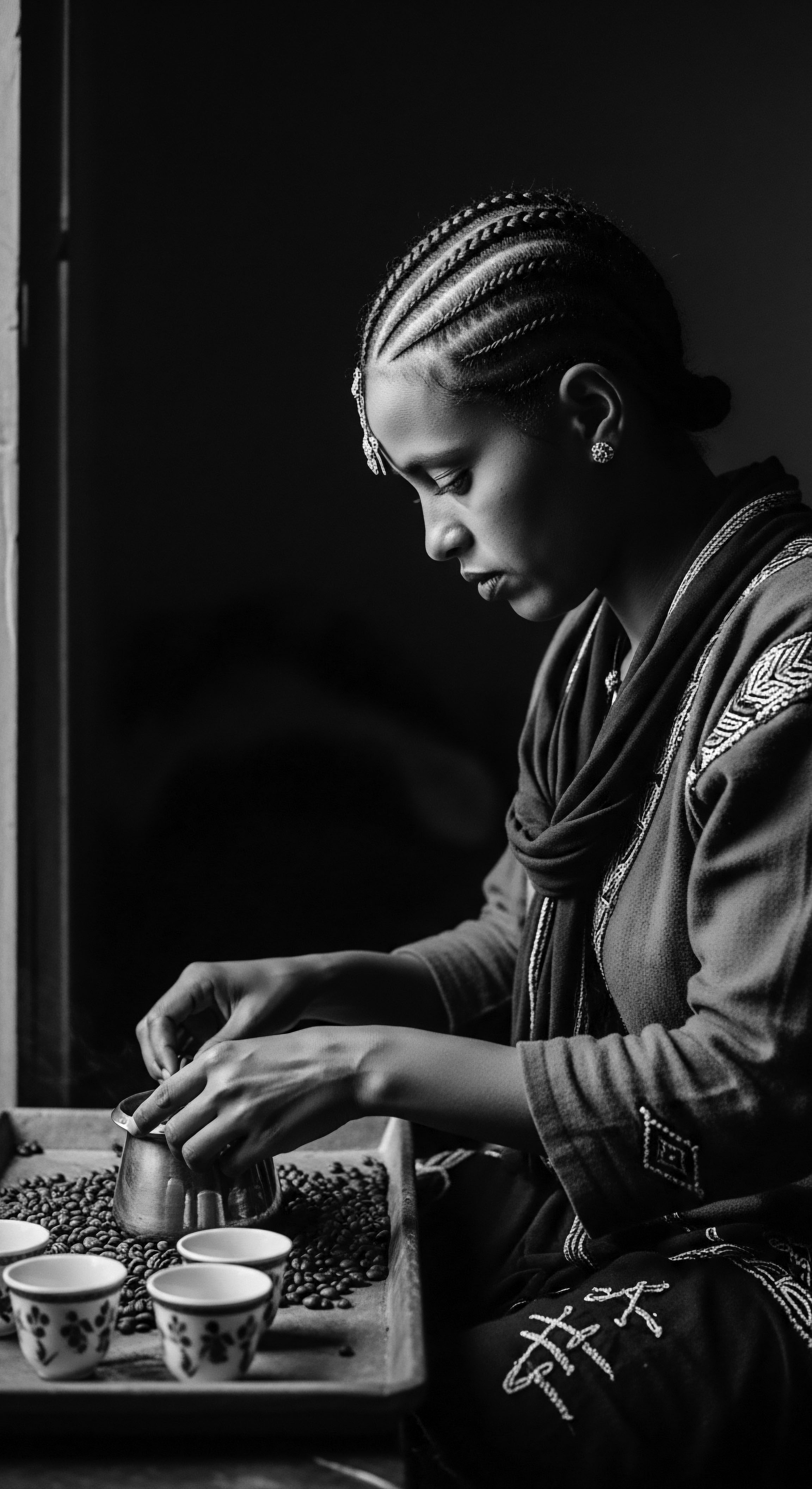
The Tools of Transformation ❉ Ancient and Enduring
The tools employed in these elaborate styling rituals were often simple yet highly effective, crafted from natural materials, and passed down through generations. Bone combs, wooden picks, and natural fibers for extensions formed the core of the ancient stylist’s kit. These tools, though seemingly humble, represented a sophisticated understanding of hair mechanics and a deep connection to the natural world. The use of specific oils and natural dyes, derived from plants and minerals, also held symbolic meaning and contributed to the hair’s presentation.
Even during the brutal era of the transatlantic slave trade, when African people were forcibly displaced and stripped of cultural markers, hair traditions persisted. Enslaved Africans, in acts of quiet resistance and ingenious survival, braided rice seeds into their hair as a means of sustenance and cultural preservation, carrying their heritage and hope for future harvests within their crowns (BLAM UK CIC, 2022). This profound practice demonstrates how hair, beyond status, also became a vessel for survival and cultural continuity in the face of profound adversity. The secrecy and ingenuity involved in maintaining such styles, despite oppressive conditions, speak volumes about their intrinsic value to personal and communal identity, even if openly expressed social status was denied.
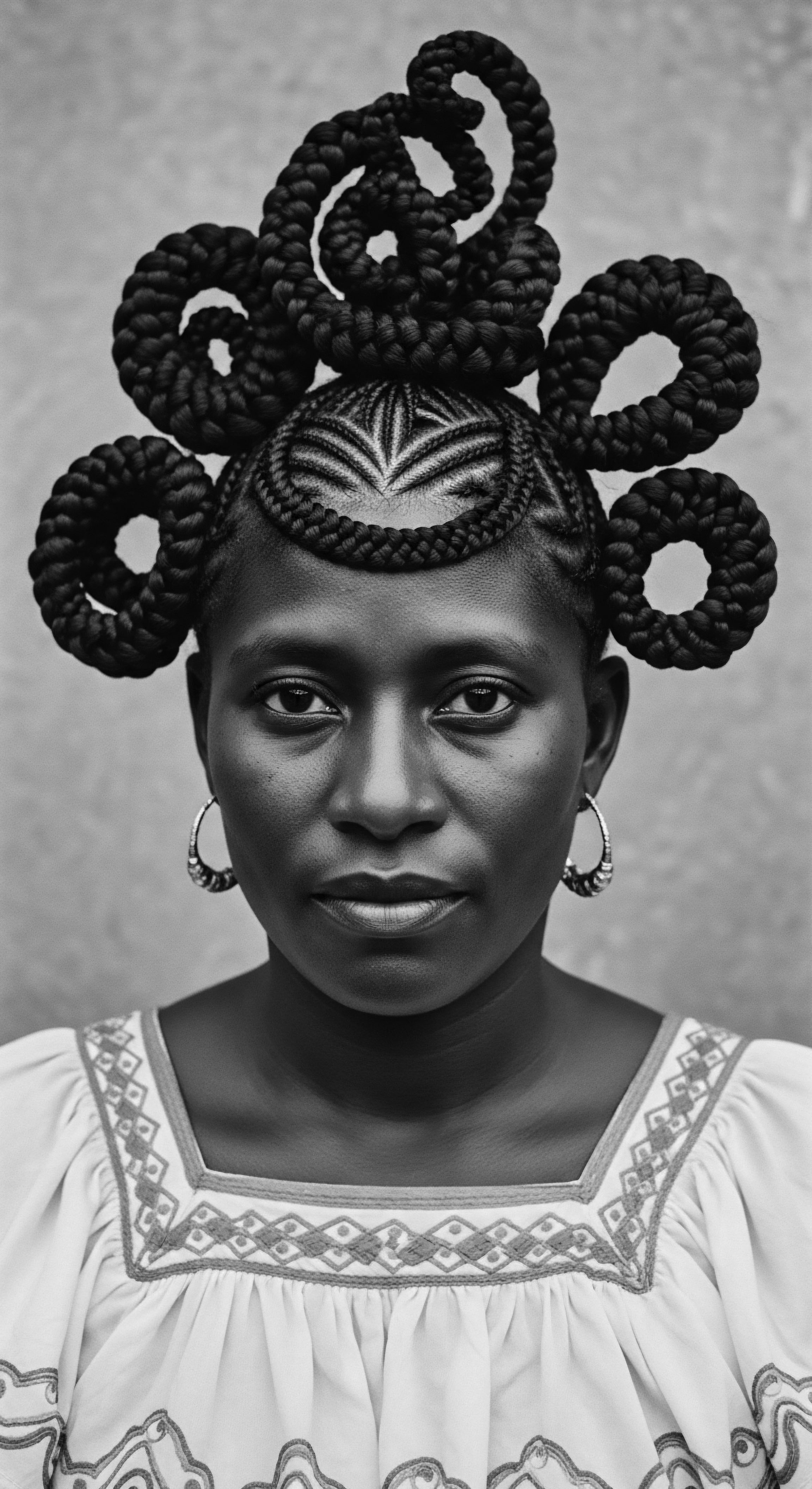
Relay
The legacy of textured hair, its deep historical roots, and its intricate ritualistic expressions continue to reverberate, shaping our understanding of holistic well-being and ancestral wisdom. How does this profound heritage inform the meticulous care regimens, the intimate nighttime practices, and the modern approaches to problem-solving within the textured hair community? This question beckons us to connect the elemental biology of the strand with the living, breathing traditions that have sustained its vitality and significance through time. Our exploration now turns to the continuum of care, a space where ancient knowledge and contemporary insights intertwine.
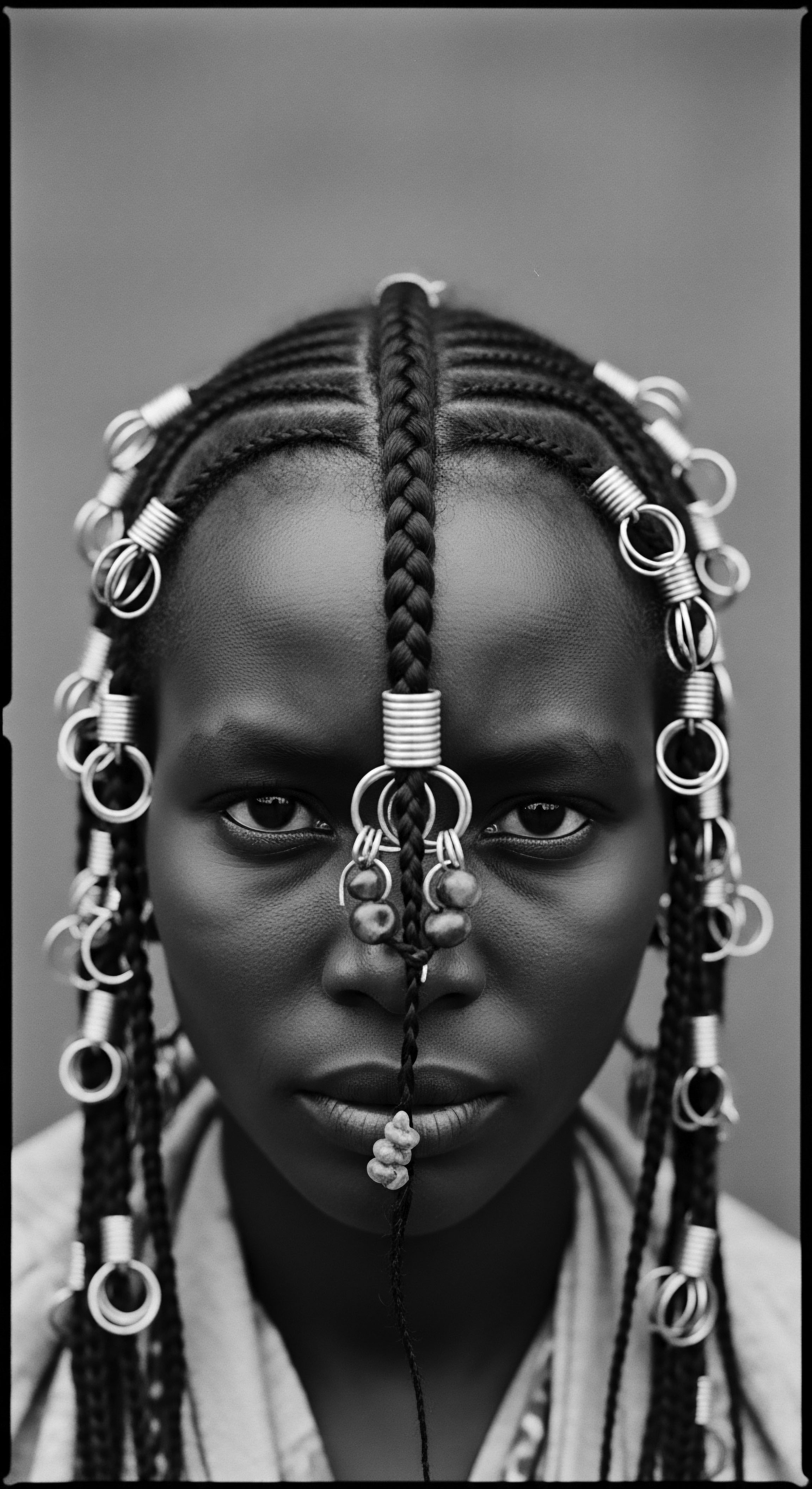
How Does Ancestral Wisdom Inform Modern Hair Care?
The concept of a personalized textured hair regimen is not a modern invention but a deeply inherited practice, rooted in generations of ancestral wisdom. Long before the advent of industrial hair products, communities across Africa and the diaspora cultivated intimate knowledge of local botanicals, natural oils, and traditional techniques. They understood the nuances of their hair’s particular needs, adapting their care based on environmental factors, life stages, and social roles.
For example, the Himba Tribe of Namibia traditionally coats their dreadlocked hair with a paste of red ochre and butterfat, not only for its distinctive aesthetic, which symbolizes their connection to the earth and ancestors, but also for its protective and moisturizing properties (Afriklens, 2024). This practice embodies a holistic approach where adornment, spirituality, and practical hair care are seamlessly integrated.
Ancestral wisdom guides modern textured hair care, demonstrating a timeless understanding of botanical properties and individual needs for holistic well-being.
The application of natural ingredients such as shea butter, coconut oil, aloe vera, and various herbal infusions was commonplace, each chosen for specific therapeutic or protective qualities. These substances were not merely topical applications; they were often part of a broader wellness philosophy, believing that external nourishment reflects internal balance. The communal aspect of hair care, often seen in braiding circles or family gatherings, reinforced social bonds and served as a vehicle for transmitting this invaluable knowledge, connecting one generation to the next through shared touch and whispered lessons (Khumbula, 2024).

What is the Sacred Significance of Nighttime Hair Rituals?
The transition from day to night for textured hair has always carried a special reverence, particularly in communities where hair was seen as a spiritual antenna or a crown of life force. Nighttime rituals, such as wrapping the hair, braiding it, or covering it with protective cloths, served a dual purpose ❉ practical preservation and spiritual safeguarding. The ubiquitous Satin or Silk Bonnet, a staple in many textured hair regimens today, finds its echoes in historical practices of covering hair during rest. This was not solely to preserve a style or minimize friction, but also to protect the spiritual energy believed to reside in the hair and head.
In many African philosophies, the head (often referred to as “Ori” in Yoruba cosmology) is understood as the seat of one’s destiny, consciousness, and personal deity (Princeton University Art Museum). Therefore, protecting the head and its crown of hair, especially during sleep when one is most vulnerable, was a sacred act. This protection extended to preventing entanglement with negative energies or spiritual interferences. The practice of covering hair also signified modesty, respect, and a demarcation of public versus private presentation, further cementing its role in social etiquette and cultural identity.
The continued practice of these rituals in the diaspora, even in contexts where their original spiritual meanings may have become attenuated, speaks to the enduring power of these ancestral habits. They stand as a quiet testament to a deep-seated respect for textured hair as a vital aspect of self.
- Shea Butter ❉ A fatty extract from the shea tree nut, traditionally used across West Africa for its moisturizing and healing properties for both skin and hair, reflecting a deep connection to indigenous botanical resources.
- Chebe Powder ❉ Originating from the Basara Arab women of Chad, this blend of herbs and spices is renowned for its ability to strengthen hair, reduce breakage, and promote length retention, passed down through generations.
- Black Soap ❉ A traditional African cleanser, made from the ash of plantain peels, cocoa pods, and shea tree bark, valued for its gentle yet effective cleansing capabilities, honoring ancient methods of hygiene and care.

Addressing Challenges ❉ A Historical and Contemporary Dialogue
Textured hair, with its unique structural properties, has always required specialized care. Historically, solutions to issues such as dryness, breakage, or scalp conditions were found within the natural environment and through observation of hair’s behavior. The meticulous practice of separating strands, gently detangling, and utilizing natural emollients was a direct response to the hair’s tendency to coil and interlock. This ancestral ingenuity laid the groundwork for many modern problem-solving techniques.
However, the historical context of textured hair also carries the scars of imposed standards. The advent of colonialism and the transatlantic slave trade brought with it systematic attempts to devalue textured hair, labeling it as “unmanageable” or “unclean” (NativeMag, 2020; Matjila, 2020). This cultural assault often led to the adoption of damaging hair-straightening practices, such as hot combs and chemical relaxers, in an effort to conform to Eurocentric beauty ideals and gain social acceptance (Oxford Academic, 2024). The emergence of hair products marketed to African Americans specifically to straighten hair had the added social benefit of improving social standing, pushing individuals closer to a perceived “whiteness” and, in some ways, safety (Library of Congress).
Despite these pressures, the resilience of textured hair heritage shone through. Even when forced to adopt new grooming methods, communities found ways to adapt, resist, and reclaim their hair identity. The communal Sunday hair care rituals during slavery, where enslaved people would gather to care for each other’s hair using whatever accessible materials they could find, exemplified this enduring spirit of care and community (Library of Congress).
This continued dedication to hair care, even under duress, speaks to the deep cultural and personal significance of textured hair, transcending its mere physical presence to stand as a symbol of identity, survival, and profound heritage. Today, the natural hair movement serves as a powerful reclamation, drawing directly from these ancestral practices and reclaiming the inherent beauty and strength of textured hair.
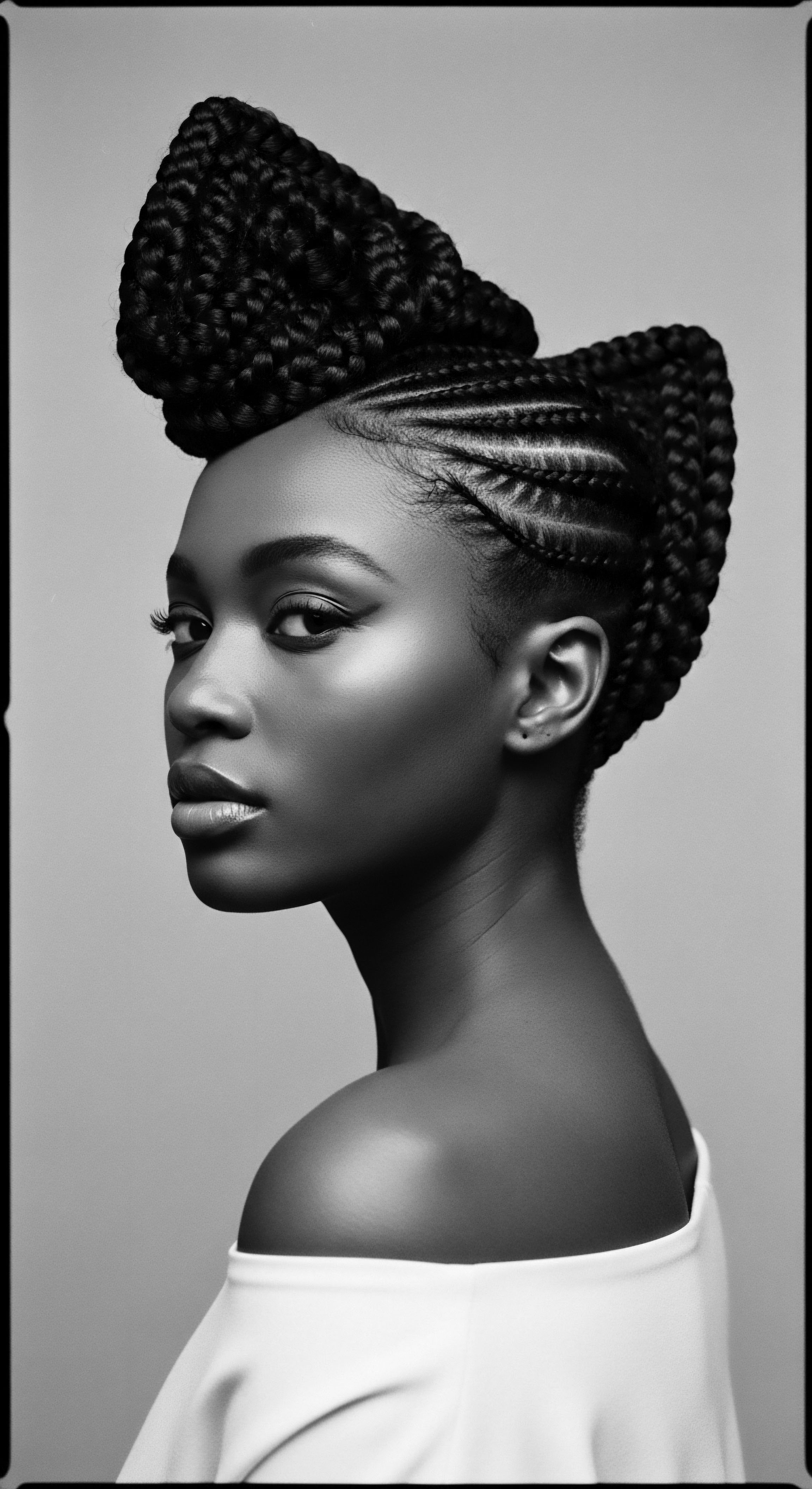
Reflection
The story of textured hair and its historical connection to social standing is not a stagnant chapter from a distant past; it is a living, breathing testament to human adaptability, cultural richness, and enduring spirit. From the intricate coiffures of ancient royalty, meticulously crafted to signal lineage and wisdom, to the quiet defiance woven into braids during times of profound oppression, hair has consistently served as a conduit for identity, a language spoken without words. It stands as a vivid archive, each curl and coil holding echoes of ancestral ingenuity and the collective journey of communities who understood that the crown of one’s head was a reflection of their soul.
We learn that the appreciation for textured hair, so often diminished in more recent history, was once a universal truth in many societies. Its inherent qualities were harnessed, revered, and adorned, not straightened or concealed. The deep respect for hair as a spiritual entity, a connection to the divine and to one’s destiny, guided care practices that prioritized health and longevity. These practices, passed down through generations, remain relevant today, inviting us to rediscover the profound wisdom held within traditional remedies and communal rituals.
The continuing journey of textured hair is one of reclamation and celebration. It is a powerful affirmation of self, a recognition of the beauty that resides in authenticity, and a renewed connection to a heritage that is both resilient and radiant. To truly grasp the historical significance of textured hair is to comprehend that its value was never confined to mere appearance; it was, and remains, a potent symbol of culture, survival, and the unbounded human spirit.
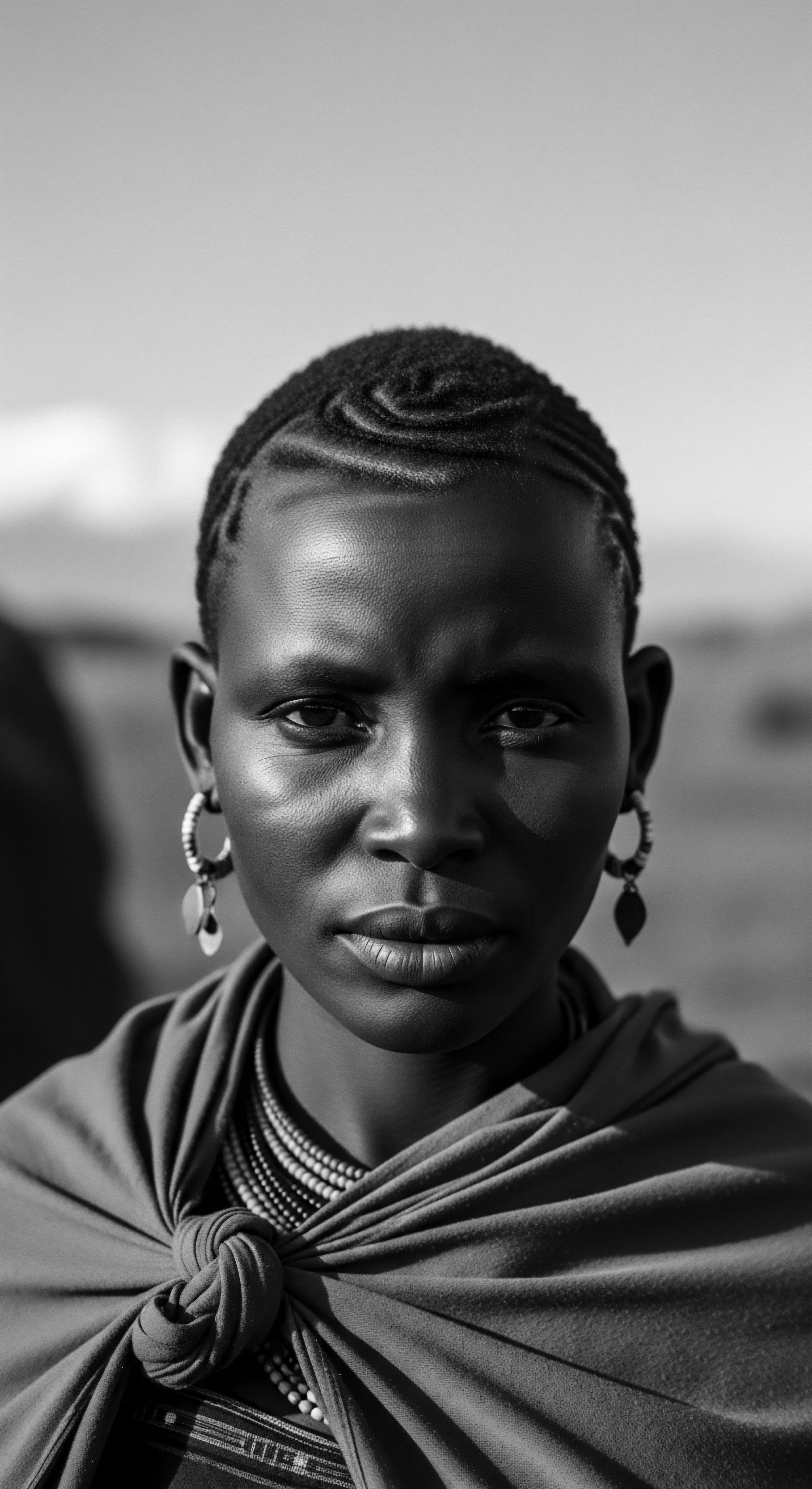
References
- Afriklens. (2024). African Hairstyles ❉ Cultural Significance and Legacy.
- BLAM UK CIC. (2022). The history of Black Hair.
- Creed & Cloth. (2024). Exploring Ancestral Roots Through Hairstyle ❉ The Artistic Legacy of the Mangbetu in Modern Expressions.
- Dansinkran Hairstyle Fashion and Its Socio-Cultural Significance in Akan Traditional Ruling. (2019). Journal of Culture, Society and Development, 49.
- Library of Congress. (n.d.). Heavy is the Head ❉ Evolution of African Hair in America from the 17th c. to the 20th c.
- Matjila, C. R. (2020). The meaning of hair for Southern African Black women. University of the Free State.
- NativeMag. (2020). Examining the history and value of African hair.
- Oxford Academic. (2024). A historical journey of the structure, texture, and identity of afro-textured hair. British Journal of Dermatology.
- Pass, V. R. (2022). The Mangbetu coiffure ❉ A story of cars, hats, branding, and appropriation. Design History Beyond the Canon.
- Princeton University Art Museum. (n.d.). Hair and the Head.
- The Sculpted Skull ❉ Understanding the Skull Elongation Tradition of the Mangbetu People. (2025). African Art Journal.
